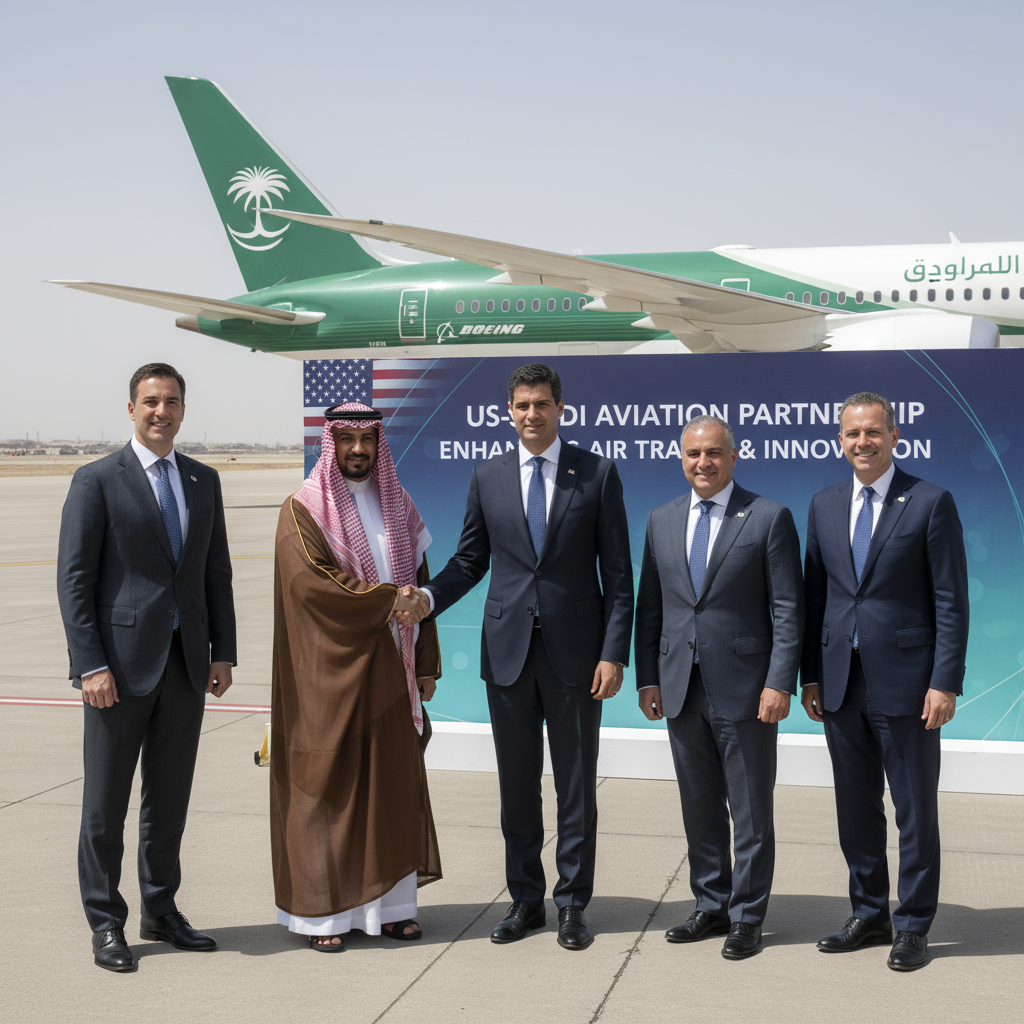Physical Address
304 North Cardinal St.
Dorchester Center, MA 02124
Physical Address
304 North Cardinal St.
Dorchester Center, MA 02124
Global aviation news tracker
Global aviation news tracker

US Saudi aviation collaboration announced on September 22, 2025 aims to align regulators, boost safety and speed tech for better passenger experience between the two countries.
The United States and Saudi Arabia on September 22, 2025 unveiled a strategic aviation partnership that brings Boeing together with the U.S. Federal Aviation Administration (FAA) to coordinate on rules, safety oversight and joint technology efforts. The deal is positioned as a framework for regulatory alignment and operational cooperation rather than a specific aircraft sale or route announcement.
Officials said the collaboration will focus on modernizing standards, improving passenger experience and exploring joint development in areas such as avionics, air traffic procedures and training programs. Boeing and the FAA will act alongside Saudi regulatory and industry partners to identify priorities and pilot projects.
Key aims include harmonizing certification processes, sharing best practices for safety management systems, and accelerating the introduction of new technologies into service. That could mean coordinated approvals for avionics upgrades, smoother cross-border operations, and cooperative work on crew training and maintenance standards.
The announcement did not list flight numbers, aircraft types or timelines for specific projects; instead it sets a policy-level roadmap so Boeing, the FAA and Saudi authorities can scope detailed programs. Observers say the approach reflects a broader push to make international approvals faster and more consistent as tech updates arrive more frequently.
For passengers, the partnership aims to deliver more reliable operations and a smoother experience as safety and certification hurdles are handled cooperatively. For industry, it offers a mechanism to reduce duplication and speed the path from prototype to deployed capability.